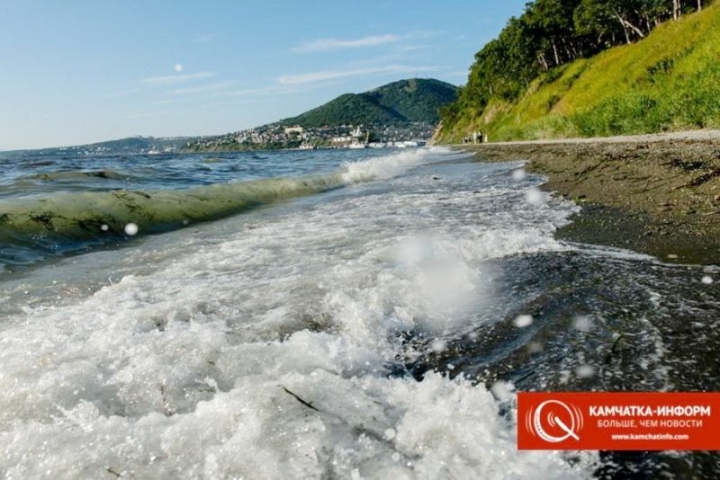
A chilling ecological discovery has emerged from Russia’s Far East, as scientific expeditions reveal that the seabed of Avacha Bay, a body of water of immense strategic and economic importance on the Kamchatka Peninsula, has become virtually devoid of life. The findings, presented by researchers from the Pacific Floating University, paint a grim picture of environmental degradation within one of the world’s largest ice-free harbors.
Experts involved in the recent ecological survey expressed profound concern over the conditions observed. Olga Isaeva, an associate professor in biology and earth sciences at Vitus Bering Kamchatka State University and a participant in the expedition, starkly described the bay’s floor: ‘There is simply no life left on the bottom of Avacha Bay. What we brought up was bare fuel oil, black sludge that was difficult to wash away. Animal life there was very, very scarce.’
Adding to the gravity of the situation are the unique hydrological features of the bay itself. Professor Isaeva highlighted how specific circadian currents create a circular flow, effectively trapping pollutants within the bay. ‘They circle in a ring and do not exit the bay, so all this dirt, the fuel oil, all of it remains trapped inside,’ she explained, underscoring why the pollution becomes so concentrated and persistent.
Investigators have pinpointed several primary contributors to the bay’s dire state. Key among these are discharges from maritime vessels, untreated urban runoff from nearby settlements, and the long-term consequences of the infilling of Kultuchnoye Lake. This lake historically served as a critical buffer, helping to filter contaminants before they reached the bay, a function now lost.
The ecological fallout extends directly to the marine ecosystem and potentially human health. According to Isaeva, the aquatic organisms inhabiting this polluted zone are becoming ‘inedible,’ raising serious questions about food safety and the health of the broader food chain dependent on the bay’s resources. Significantly, researchers noted that the ecological conditions outside the confines of Avacha Bay remain considerably better, aligning with long-term environmental benchmarks, which further highlights the localized nature and intensity of the degradation within the bay.
Avacha Bay, also known as Avachinskaya Guba, holds profound global significance as one of the world’s largest non-freezing bays, capable of accommodating vessels of any size. Stretching 24 kilometers in length with an entrance width of 3 kilometers and a total surface area of 215 square kilometers, reaching depths of up to 26 meters, its strategic position and natural characteristics make the environmental crisis unfolding within its waters a matter of international concern, demanding urgent attention and mitigation efforts.